-
BackX
-
Components
-
-
Category
-
Semiconductors
- Diodes
- Thyristors
-
Electro-insulated Modules
- Electro-insulated Modules | VISHAY (IR)
- Electro-insulated Modules | INFINEON (EUPEC)
- Electro-insulated Modules | Semikron
- Electro-insulated Modules | POWEREX
- Electro-insulated Modules | IXYS
- Electro-insulated Modules | POSEICO
- Electro-insulated Modules | ABB
- Electro-insulated Modules | TECHSEM
- Go to the subcategory
- Bridge Rectifiers
-
Transistors
- Transistors | GeneSiC
- SiC MOSFET Modules | Mitsubishi
- SiC MOSFET Modules | STARPOWER
- Module SiC MOSFET ABB’s
- IGBT Modules | MITSUBISHI
- Transistor Modules | MITSUBISHI
- MOSFET Modules | MITSUBISHI
- Transistor Modules | ABB
- IGBT Modules | POWEREX
- IGBT Modules | INFINEON (EUPEC)
- Silicon Carbide (SiC) semiconductor elements
- Go to the subcategory
- Gate Drivers
- Power Blocks
- Go to the subcategory
- Electrical Transducers
-
Passive components (capacitors, resistors, fuses, filters)
- Resistors
-
Fuses
- Miniature Fuses for electronic circuits - ABC & AGC Series
- Tubular Fast-acting Fuses
- Time-delay Fuse Links with GL/GG & AM characteristics
- Ultrafast Fuse Links
- Fast-acting Fuses (British & American standard)
- Fast-acting Fuses (European standard)
- Traction Fuses
- High-voltage Fuse Links
- Go to the subcategory
- Capacitors
- EMI Filters
- Supercapacitors
- Power surge protection
- TEMPEST emission revealing filters
- Surge arrester
- Go to the subcategory
-
Relays and Contactors
- Relays and Contactors - Theory
- 3-Phase AC Semiconductor Relays
- DC Semiconductor Relays
- Controllers, Control Systems and Accessories
- Soft Starters and Reversible Relays
- Electromechanical Relays
- Contactors
- Rotary Switches
-
Single-Phase AC Semiconductor Relays
- AC ONE PHASE RELAYS 1 series| D2425 | D2450
- One phase semiconductor AC relays CWA and CWD series
- One phase semiconductor AC relays CMRA and CMRD series
- One phase semiconductor AC relays - PS series
- Double and quadruple semiconductor AC relays - D24 D, TD24 Q, H12D48 D series
- One phase semiconductor relays - gn series
- Ckr series single phase solid state relays
- One phase AC semiconductor relays for DIN bus - ERDA I ERAA series
- 150A AC single phase relays
- Rail Mountable Solid State Relays With Integrated Heat Sink - ENDA, ERDA1 / ERAA1 series
- Go to the subcategory
- Single-Phase AC Semiconductor Relays for PCBs
- Interface Relays
- Go to the subcategory
- Cores and Other Inductive Components
- Heatsinks, Varistors, Thermal Protection
- Fans
- Air Conditioning, Accessories for Electrical Cabinets, Coolers
-
Batteries, Chargers, Buffer Power Supplies and Inverters
- Batteries, Chargers - Theoretical Description
- Modular Li-ion Battery Building Blocks, Custom Batteries, BMS
- Batteries
- Battery Chargers and Accessories
- Uninterruptible Power Supply and Buffer Power Supplies
- Inverters and Photovoltaic Equipments
- Energy storage
- Fuel cells
- Lithium-ion batteries
- Go to the subcategory
-
Automatics
- Spiralift Lifts
- Futaba Drone Parts
- Limit Switches, Microswitches
- Sensors, Transducers
-
Infrared Thermometers (Pyrometers)
- IR-TE Series - Water-proof Palm-sized Radiation Thermometer
- IR-TA Series - Handheld Type Radiation Thermometer
- IR-H Series - Handheld Type Radiation Thermometer
- IR-BA Series - High-speed Compact Radiation Thermometer
- IR-FA Series - Fiber Optic Radiation Thermometer
- IR-BZ Series - Compact Infrared Thermometers
- Go to the subcategory
- Counters, Time Relays, Panel Meters
- Industrial Protection Devices
- Light and Sound Signalling
- Thermographic Camera
- LED Displays
- Control Equipments
- Go to the subcategory
-
Cables, Litz wires, Conduits, Flexible connections
- Wires
- Cable feedthroughs and couplers
- Litz wires
- Cables for extreme applications
- Sleevings
-
Braids
- Flat Braids
- Round Braids
- Very Flexible Flat Braids
- Very Flexible Round Braids
- Cylindrical Cooper Braids
- Cylindrical Cooper Braids and Sleevings
- Flexible Earthing Connections
- PCV Insulated Copper Braids (temp. up to 85C)
- Flat Aluminium Braids
- Junction Set - Braids and Tubes
- Steel Braids
- Go to the subcategory
- Traction Equipment
- Cable Terminals
- Flexible Insulated Busbars
- Flexible Multilayer Busbars
- Cable Duct Systems
- Go to the subcategory
- View all categories
-
Semiconductors
-
-
- Suppliers
-
Applications
- CNC Machine Tools
- DC and AC Drives (Inverters)
- Energetics
- Energy bank
- Equipment and Components for Hazardous Areas [Ex]
- Equipment for Distribution, Control and Telecommunications Cabinets
- HVAC Automation
- Induction Heating
- Industrial Automation
- Industrial Protective Devices
- Machines for Drying and Wood Processing
- Machines for Thermoforming Plastics
- Mining, Metallurgy and Foundry
- Motors and Transformers
- Power Supplies (UPS) and Rectifier Systems
- Printing
- Temperature Measurement and Regulation
- Test and Laboratory Measurements
- Tram and Railway Traction
- Welding Machines
-
Assembly
-
-
Inductors
-
-
Induction devices
-
-
Service
-
- Contact
- Zobacz wszystkie kategorie
How to Pull a Cable Through a Conduit?

Preparing the Cable and Conduit for Installation
Preparing the cable and conduit is a key step that significantly affects the ease and safety of the entire installation. Proper actions at this stage minimize the risk of cable damage and facilitate pulling wires through the conduit.
Choosing the Right Conduit for the Type of Installation
The selection of the appropriate conduit depends on the type of installation and the environment in which the cable will be routed. For standard electrical installations in buildings, a corrugated PVC conduit PCV is most commonly used, which is flexible, resistant to mechanical damage, and facilitates cable pulling. For outdoor or underground installations, consider using a weather-resistant conduit, which provides additional cable protection.
Checking the Conduit for Obstructions and Condition
Before pulling the cable, ensure that the conduit is clear and free of obstacles. Even a small bend or debris can hinder the cable insertion. If necessary, use compressed air or an inspection camera to check the interior of the conduit and ensure it is fully clear.
Optimizing the Cable End and Pulling Line
The cable end should be properly prepared – ideally slightly rounded or wrapped with electrical tape to facilitate movement through the conduit. If using a pulling line or installation pilot, securely attach the cable to it using a strong but flexible tie that does not increase the cable's diameter.
Marking Cables Before Pulling
Before starting the pull, it is advisable to mark the cables, especially if the installation involves multiple wires in the same conduit. Markings make it easier to identify and connect wires later, minimizing the risk of errors. You can use colored tape or a permanent marker.
Basic Techniques for Pulling a Cable Through a Conduit
After properly preparing the cable and conduit, the next step is to choose an effective cable pulling method. Depending on the route length, cable type, and installation conditions, different techniques can be applied to make the work easier and reduce the risk of damage.
Using a Fish Tape on Short Sections
Fish tape is a flexible steel or plastic tape that allows you to insert the cable through the conduit on short and medium sections. Simply insert the end of the fish tape into the conduit, then attach the cable to it. By gently pulling, the fish tape guides the cable to the end of the route. This is a simple and very effective method for most residential and office installations.
Using an Installation Pilot and Pulling Line
For more difficult or longer routes, an installation pilot along with a thin pulling line works very well. The pilot is inserted into the conduit, and the cable is then tied to it. Gently pulling the line allows the cable to pass through bends and narrow sections without risk of kinking or damage.
Lubricating the Cable with Specialized Gel or Talc
To reduce friction in the conduit and facilitate cable movement, it is worth using specialized cable pulling gel or talc. The lubricant not only speeds up the work but also protects the cable insulation from mechanical damage.
Teamwork for Increased Efficiency
For longer sections or a larger number of cables, having a second person significantly improves work efficiency. One person feeds the cable into the conduit, while the other gently guides it at the end, controlling tension and direction. This approach minimizes the risk of blockages and cable damage.
Advanced Methods for Pulling in Difficult Conditions
For long, curved routes or hard-to-install sections, standard methods may be insufficient. In such cases, advanced techniques can facilitate cable pulling through the conduit and minimize the risk of damage.
The "Vacuum Method" – Using Suction
The "vacuum method" involves using suction to pull a guiding line through the conduit. One end of the line is placed at a vacuum or blower, depending on the model, allowing the cable to be pulled over longer distances efficiently. This is particularly useful for ceiling or floor installations where access to the conduit is limited.
Pulling the Line with Compressed Air
For very long or curved conduits, the blowing method with compressed air is used. A lightweight guiding line is inserted into the conduit, and compressed air pushes it along the route. Once the line reaches the end, the cable can be securely attached and pulled safely through the entire section.
Gravity Technique with a Weight
The gravity technique works well in vertical or steep sections. A small weight is attached to the guiding line, which falls freely through the conduit under gravity. Once the weight reaches the end of the route, the cable is attached and pulled down or up as needed.
Rod Systems for Long and Curved Routes
For very long routes or conduits with many bends, installation rod systems are used. These consist of flexible, connectable rods that allow the guiding line to be pushed through even dozens of meters of complex conduit. This solution makes the work much easier and more efficient.
Tools and Auxiliary Means to Facilitate Pulling
Besides basic cable pulling techniques, there are various tools and auxiliary aids that significantly facilitate the work, especially in challenging installations.
Auxiliary String and Steel Wire as Improvised Solutions
In emergencies or for short runs, an auxiliary string or thin steel wire can be used to pull the cable through the conduit. The string should be securely attached to the cable end, preferably reinforced with electrical tape to prevent snagging on the conduit edges. Although improvised, this solution is often very effective in difficult conditions.
Electrical Tape for Securing Connections
Electrical tape serves two purposes: it secures the cable ends and connects them to the pulling line or fish tape. This ensures smooth cable movement through the conduit and minimizes the risk of snagging or damaging insulation. It is important that the tape is applied neatly and does not create excessive bulk at the cable end.
Cable Pullers and Other Installation Tools
For professional installations, cable pullers are recommended to facilitate inserting wires into conduits, especially for long or curved routes. Additionally, tools such as flexible guides or stainless steel lines are useful to ensure cable safety and work comfort.
Troubleshooting While Pulling a Cable
While pulling cables through the conduit, various difficulties may arise that hinder or prevent proper installation. Knowing how to identify and resolve them is crucial for efficient work.
Conduit Blockages – Identifying and Removing Obstacles
If a cable is stuck in the conduit and cannot be pulled further, first check whether the cause is a bend, dirt, or pinched insulation. Before attempting to unblock, make sure the installation is disconnected from power. If a guiding line was used, gently move it back and forth while lightly pulling the cable — often this is enough to release the blockage.
Using an Inspection Camera to Locate Problems
In more difficult cases, an inspection camera is useful. It allows you to closely examine the interior of the conduit and locate obstacles or damage, facilitating safe removal of the problem. This avoids unnecessary cable removal or conduit damage.
Replacing a Damaged or Kinked Conduit
If the conduit is severely damaged, cracked, or excessively bent, replacing it is the best solution. Attempting to pull a cable through a damaged conduit can result in insulation tearing or complete cable blockage. Replacing the conduit ensures installation safety and facilitates further work.
Choosing the Right Type of Conduit
Selecting the appropriate conduit is crucial for the safety and durability of the cable installation. Different types of conduits have different properties, so it is worth choosing according to the installation location and type.
Smooth Interior Conduit and Its Advantages
Smooth interior conduit ensures minimal friction during cable pulling, making the work easier and reducing the risk of insulation damage. It is ideal where cables will be frequently moved or when precise cable routing is required over long distances.
Segmented Conduit and Its Applications
Segmented conduit consists of connected sections that can be easily adjusted to the route length. Its segmented construction makes it more flexible, facilitating cable routing through curved and hard-to-reach areas. This solution works well in both residential and industrial buildings.
Underground and Outdoor Conduit – Weather Resistance
For underground or outdoor installations, choose a weather-resistant conduit and UV-resistant type. Such conduits are usually made of materials with increased mechanical strength, providing protection against moisture, damage, and temperature effects.
The Importance of the Correct Conduit Diameter for Cable Safety
The conduit diameter should match the number and diameter of cables. A conduit that is too narrow makes pulling cables difficult and increases the risk of insulation damage, while one that is too wide can allow unnecessary cable movement inside the tube. Choosing the correct diameter is therefore crucial for the safety and durability of the installation.
Alternative and Improvised Methods (DIY)
Professional installation tools are not always available. In such cases, home and improvised cable pulling methods allow installation to be completed efficiently with minimal equipment.
Home Methods for Pulling Cable Without Specialized Tools
For short routes or simple installations, basic household items can be used. A thin string or steel wire can serve as an improvised guiding line. The cable can be attached to the string with electrical tape, creating a smooth, safe end that easily passes through the conduit. This method works for simple, straight routes and helps prevent cable damage.
Twisting Cable Technique as an Assisting Method
In some situations, twisting the cable in the conduit can help. The cable end is slightly twisted around the pulling line or fish tape, reducing friction and facilitating movement through bends. This technique is particularly useful for curved or hard-to-access conduits.
Safety and Good Installation Practices
Safe cable pulling through a conduit is not only about efficiency but also protecting the installation from damage. Following best practices ensures cable durability and installation safety.
How to Avoid Cable and Conduit Damage
To minimize the risk of damage, you should:
-
Choose a conduit with the correct diameter for the number and size of cables.
-
Use lubricants such as cable pulling gel or talc to reduce friction.
-
Carefully prepare cable ends and attachments to the guiding line so that no bulges are created.
-
Avoid excessive pulling – always move the cable gently and evenly.
Maintenance and Inspection After Pulling
After completing the pull, it is worth performing an inspection of the conduit and cables:
-
Check if the cable is damaged or abraded.
-
Inspect the conduit and replace any damaged sections if necessary.
-
Ensure cables are properly arranged and marked to facilitate future maintenance and potential expansion.
Regular inspection and adherence to safety rules help avoid problems during the operation of the electrical installation and ensure long-lasting, safe operation of cables within the conduit.
Related products
Related posts
 Thermally conductive materials in power storages
Thermally conductive materials in power storages
 Measuring power and energy in electric circuits
Measuring power and energy in electric circuits
 Wentylatory przemysłowe - rodzaje, właściwości
Wentylatory przemysłowe - rodzaje, właściwości

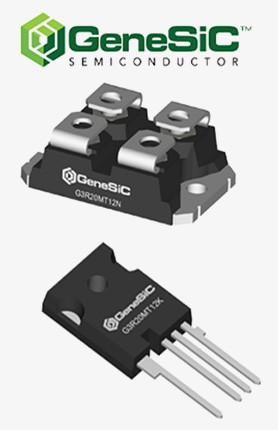
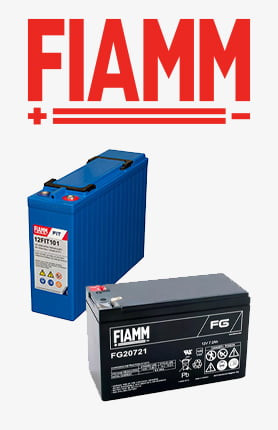
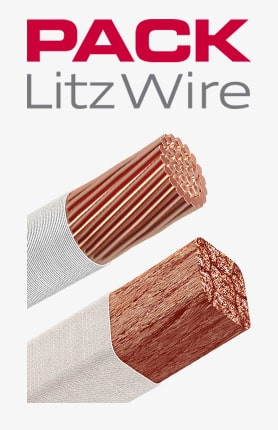
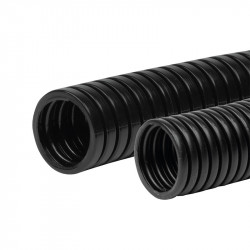
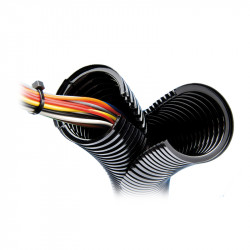
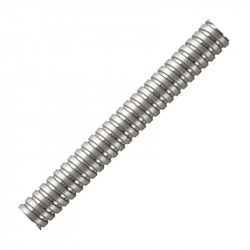
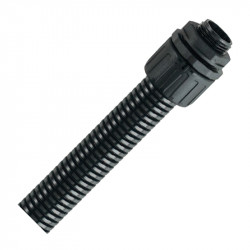
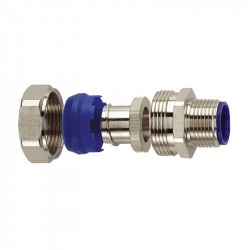
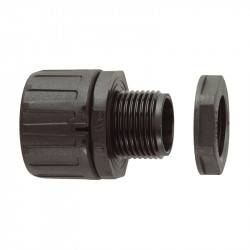
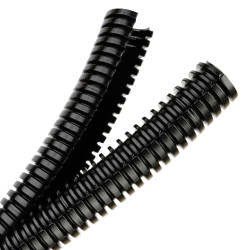
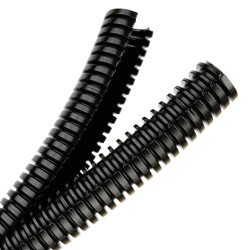
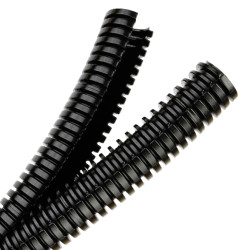
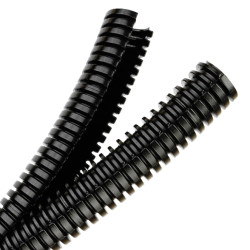
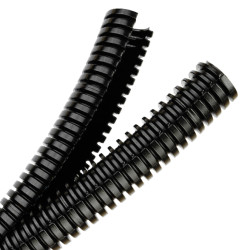
Leave a comment